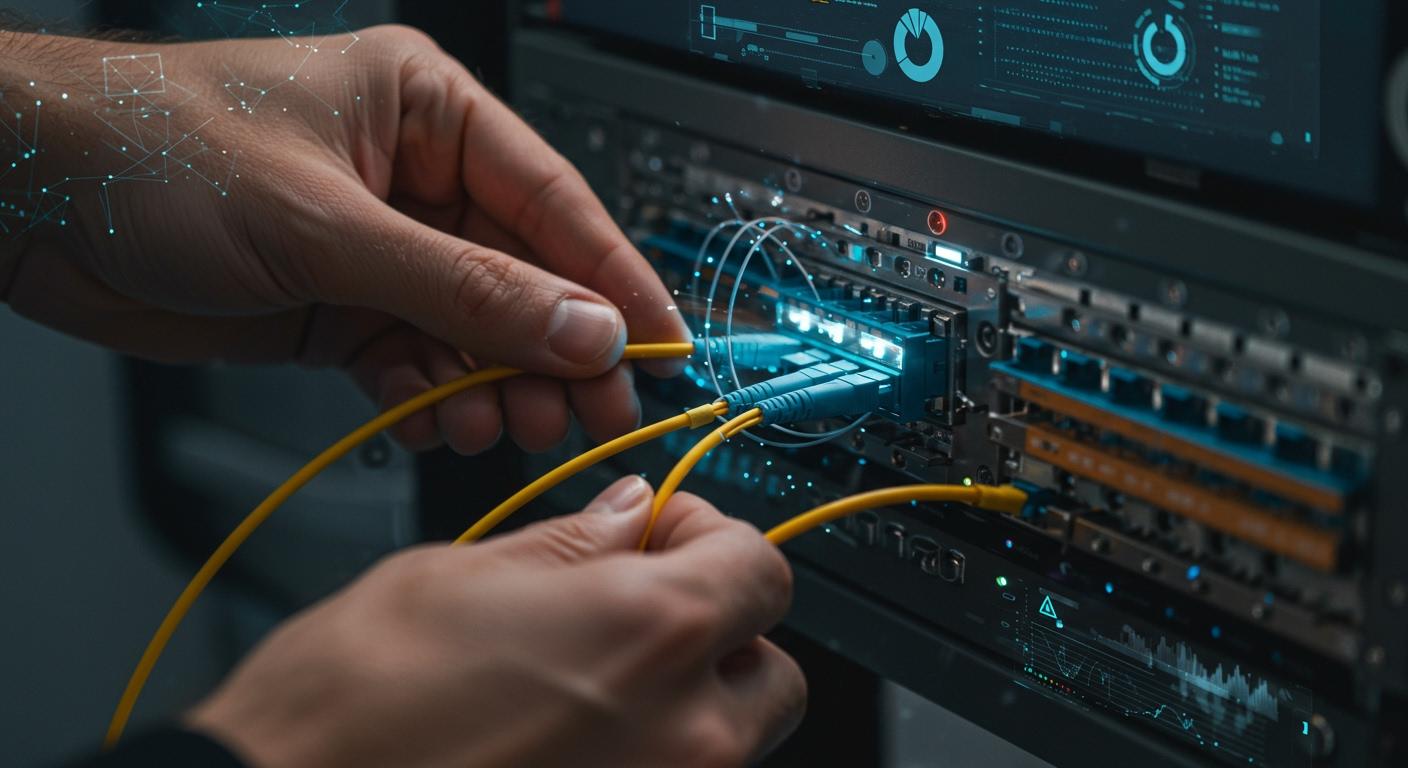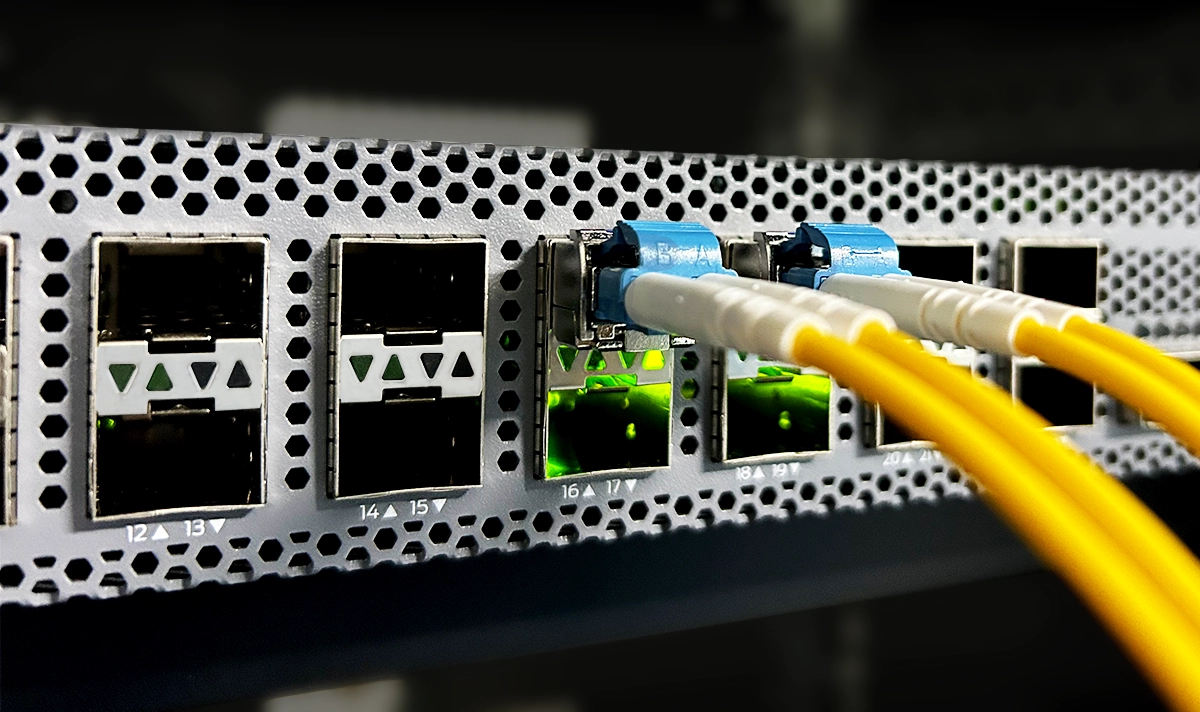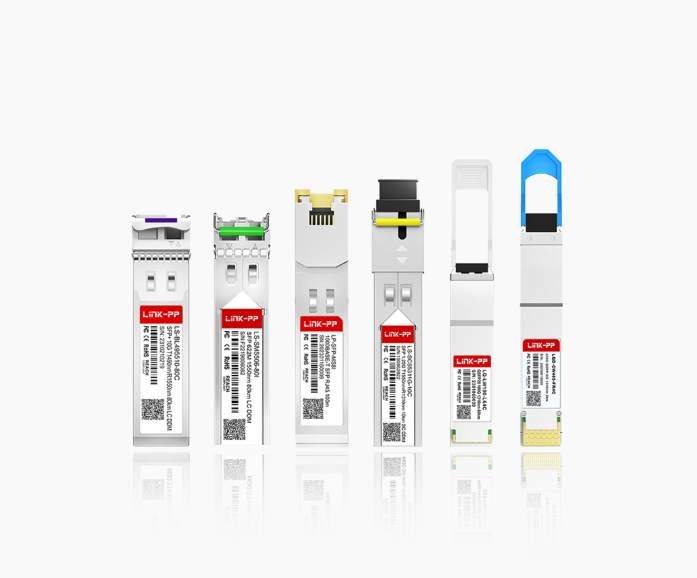
Fiber optics have revolutionized modern communications, offering blazing-fast speeds and reliability for everything from home internet to enterprise networks. However, improper installation can undermine these benefits, leading to issues like attenuation, latency, or complete failure. According to industry reports, up to 30% of network outages stem from installation errors. That's why understanding common fiber optic installation mistakes and how to avoid them is essential for anyone involved in network setups. In this article, we'll cover key pitfalls, practical solutions, and expert insights to help you sidestep these problems. Plus, we'll touch on the role of optical modules—like those from LINK-PP—in ensuring a robust connection. By the end, you'll be equipped with the knowledge to optimize your fiber installations for peak performance.
🛑 Key Takeaways
Do not let fiber cables get twisted or bent. Follow bend radius rules to stop signal loss.
Give fiber cables good support. Use clips and brackets so they do not sag or get stressed.
Always clean connectors before you use them. Use lint-free wipes and the right cleaning fluid so signals do not get blocked.
Take your time when you splice. Line up the cables right and use clean tools for strong connections.
Measure carefully before you cut cables. Check your measurements again to stop waste and make sure the cable is the right length.
🛑 Why Fiber Installation Errors Matter
Before we jump into the mistakes, let's briefly discuss why they're so impactful. Fiber optic cables transmit data using light, which makes them sensitive to bends, contaminants, and poor connections. A single error can cause:
Signal Degradation: Even minor bends or cracks can lead to significant data loss.
Increased Costs: Reworking installations can double project expenses.
Security Risks: Poorly installed fibers might be vulnerable to eavesdropping or physical damage.
By avoiding these errors, you'll save time, money, and ensure a future-proof network. Now, let's explore the top mistakes and their solutions.
🛑 Common Fiber Installation Mistakes and How to Avoid Them
In this section, we'll break down the most frequent errors into categories, complete with tips to prevent them. We've also included a handy table for quick reference.
1. Poor Planning and Design
One of the biggest fiber installation mistakes is skipping thorough planning. Rushing into installation without assessing the environment, bandwidth needs, or potential obstacles can lead to inefficiencies or failures.
How to Avoid:
Conduct a site survey to identify hazards like sharp edges or extreme temperatures.
Use design software to map cable routes and avoid excessive bending.
Consider future scalability—plan for upgrades to avoid re-installation later.
2. Incorrect Cable Handling
Fiber cables are delicate, and mishandling them is a common fiber optic installation error. This includes pulling too hard, bending beyond the minimum bend radius, or exposing cables to harsh conditions.
How to Avoid:
Follow the manufacturer's bend radius guidelines (typically 10-20 times the cable diameter).
Use proper pulling techniques and tools, such as tension meters.
Protect cables with conduits or sleeves in high-traffic areas.
3. Contamination and Poor Connector Care
Dust, oils, or debris on connectors can cause signal loss—a top culprit in fiber optic network issues. Many installers overlook cleaning, leading to intermittent connections.
How to Avoid:
Always use lint-free wipes and approved cleaning solutions before mating connectors.
Inspect connectors with a microscope to ensure cleanliness.
Store unused connectors in protective caps to prevent contamination.
4. Inadequate Testing and Verification
Skipping post-installation testing is a risky fiber optic installation mistake that can hide latent defects. Without proper verification, you might miss issues like high attenuation or misalignment.
How to Avoid:
Perform end-to-end tests using an Optical Time-Domain Reflectometer (OTDR) or power meter.
Document results for future reference and troubleshooting.
Test under operational conditions to simulate real-world use.
To summarize, here's a table outlining these common mistakes and their solutions:
Common Mistake | Potential Impact | How to Avoid It |
|---|---|---|
Poor Planning | Wasted resources, poor performance | Conduct site surveys, use design tools, plan for scalability |
Incorrect Cable Handling | Signal loss, cable damage | Adhere to bend radius, use proper tools, protect cables |
Contamination | Intermittent connections, data loss | Clean connectors regularly, inspect with microscope |
Inadequate Testing | Unseen defects, network downtime | Use OTDR testing, document results, simulate real conditions |
By addressing these areas, you'll minimize errors and maximize network efficiency. For more in-depth guidance, check out our resources on best practices for fiber optic cable installation—it's a game-changer for avoiding costly rework.

🛑 The Role of Optical Modules in Fiber Installation
Now, let's zoom in on optical modules, a critical component often overlooked in fiber setups. Optical modules, or transceivers, convert electrical signals to optical ones and vice versa, playing a key role in data transmission. Choosing the wrong module or installing it improperly can lead to compatibility issues, signal degradation, or even hardware damage—a common fiber optic installation error that's easily preventable.
Why Optical Modules Matter
In fiber networks, optical modules ensure seamless communication between devices. They come in various form factors, such as SFP, SFP+, or QSFP, and must match the network's speed, distance, and wavelength requirements. For instance, using a multimode module in a single-mode setup can cause significant loss. This is where how to choose the right optical module for fiber installation becomes a vital long-tail keyword to consider for optimal performance.
Common Optical Module Mistakes
Mismatched Specifications: Installing a module that doesn't support the required data rate or distance.
Poor Handling: Touching the optical ports, which can introduce contaminants.
Incompatibility with Equipment: Using non-certified modules that don't work with your switches or routers.
To avoid these, always verify specifications and handle modules with care. For reliable performance, we recommend using LINK-PP optical transceivers, which are engineered for durability and compatibility. A popular model like the LINK-PP SFP-10G-SR is ideal for 10G multimode applications, offering low power consumption and high stability. By integrating LINK-PP products, you reduce the risk of installation errors and ensure a smoother, more reliable network. Remember, investing in quality components like these is a best practice for avoiding fiber optic network issues in the long run.
🛑 Additional Tips for a Flawless Installation
Beyond the basics, here are some extra pointers to elevate your fiber installation game:
Train Your Team: Ensure installers are certified and up-to-date on the latest techniques. This reduces human error and improves consistency.
Use High-Quality Materials: Opt for certified cables and components to avoid subpar performance. Brands like LINK-PP offer trusted solutions for various needs.
Monitor Environmental Factors: Protect installations from moisture, heat, or physical stress to extend lifespan.
By following these steps, you'll tackle common fiber optic installation errors and solutions effectively, building a network that's both robust and scalable.
🛑 Conclusion
Fiber optic installation doesn't have to be fraught with pitfalls. By understanding common mistakes—like poor planning, cable mishandling, contamination, and inadequate testing—you can take proactive steps to avoid them. Incorporating reliable components, such as LINK-PP optical modules, further enhances reliability and performance. Whether you're dealing with fiber optic cable installation best practices or specific issues like module compatibility, this guide has you covered. Remember, a little prevention goes a long way in ensuring your network delivers the speed and stability you need.
🛑 FAQ
What should you do if you accidentally bend a fiber cable too much?
Stop and check the cable right away. If you see damage or the cable feels weak, replace it. Never try to straighten a badly bent fiber. You risk breaking the glass inside.
How often should you clean fiber connectors?
You should clean connectors every time before you connect them. Even if they look clean, dust or oil can cause problems. Use a lint-free wipe and the right cleaning fluid.
Can you fix a bad splice yourself?
If you have the right tools and training, you can fix a bad splice. If not, call a professional. A poor splice can cause signal loss and more trouble later.
Why do you need to label fiber cables?
Labels help you find the right cable fast. If you skip labeling, you might unplug the wrong cable or connect to the wrong port. Good labels save time and prevent mistakes.




